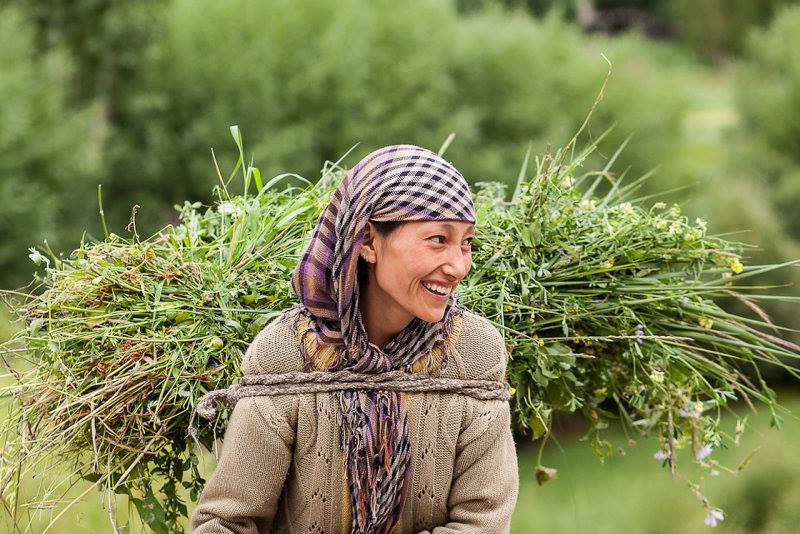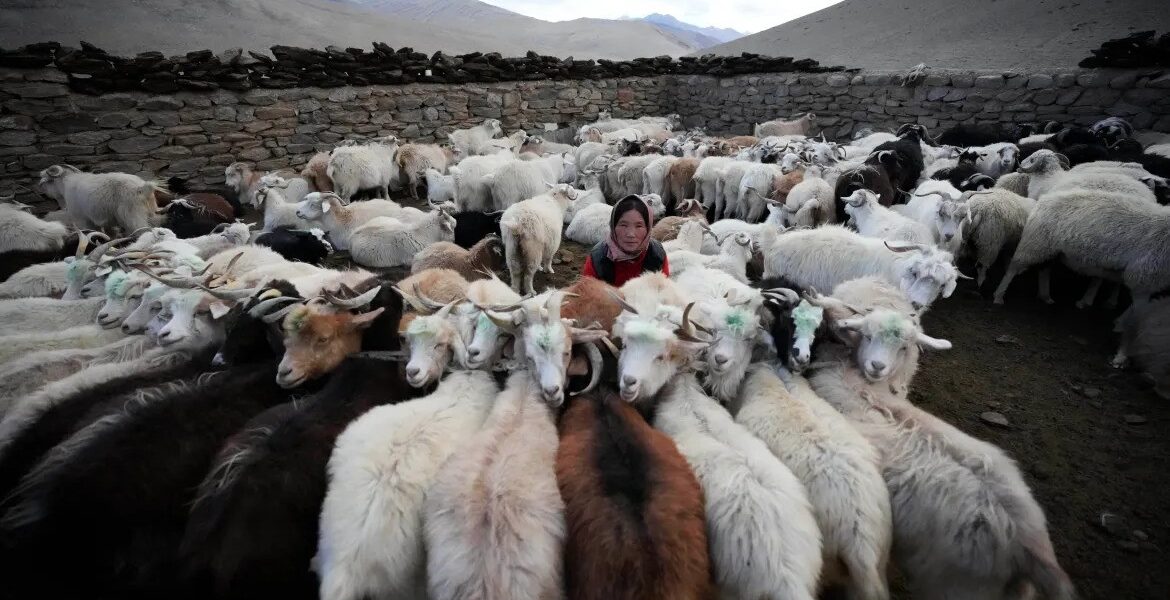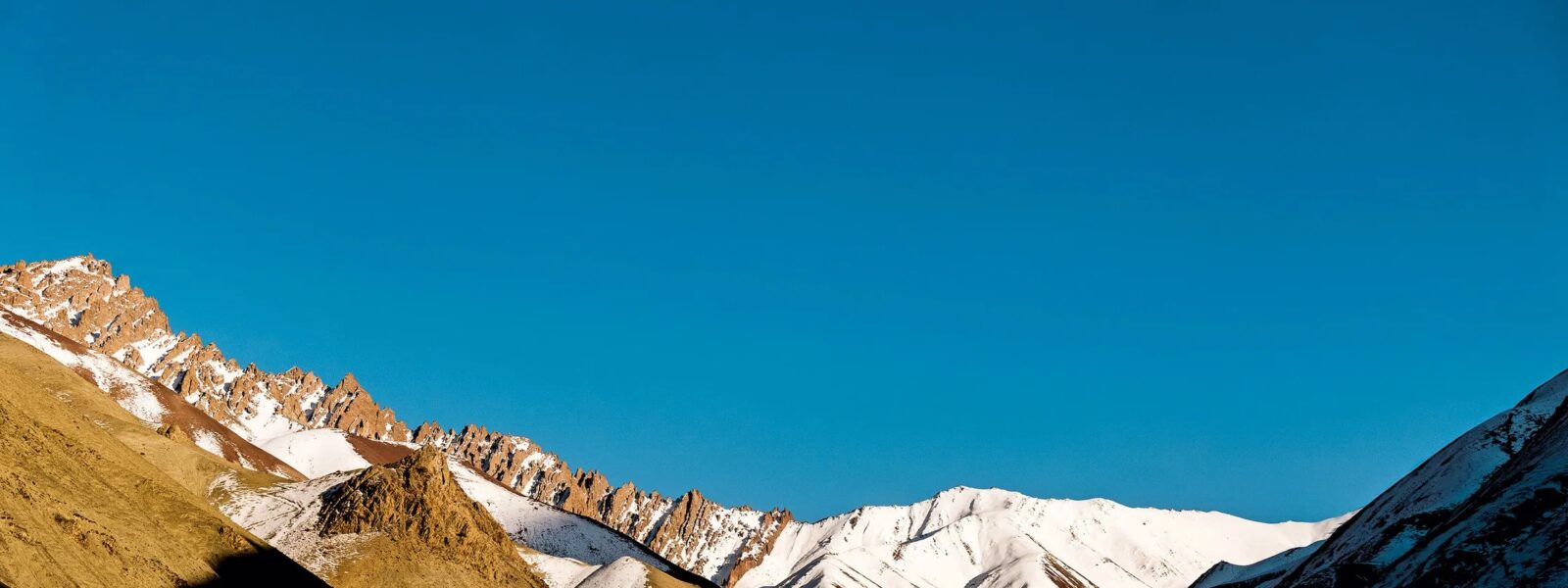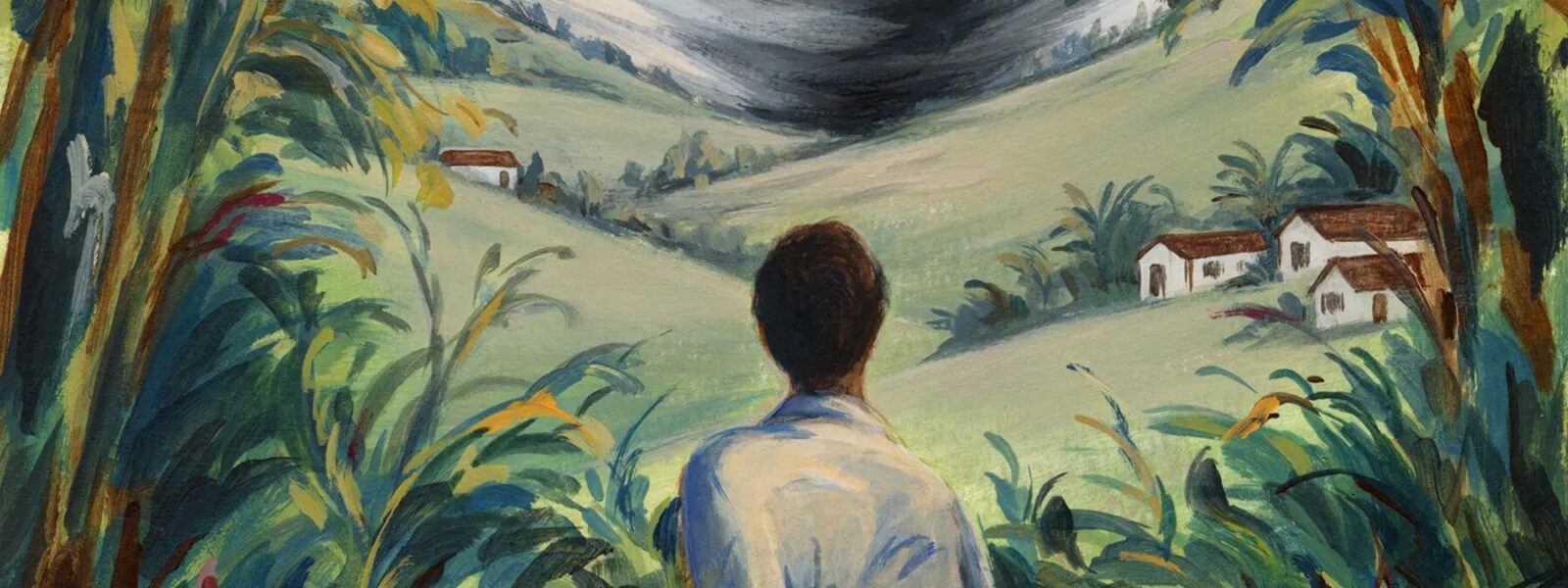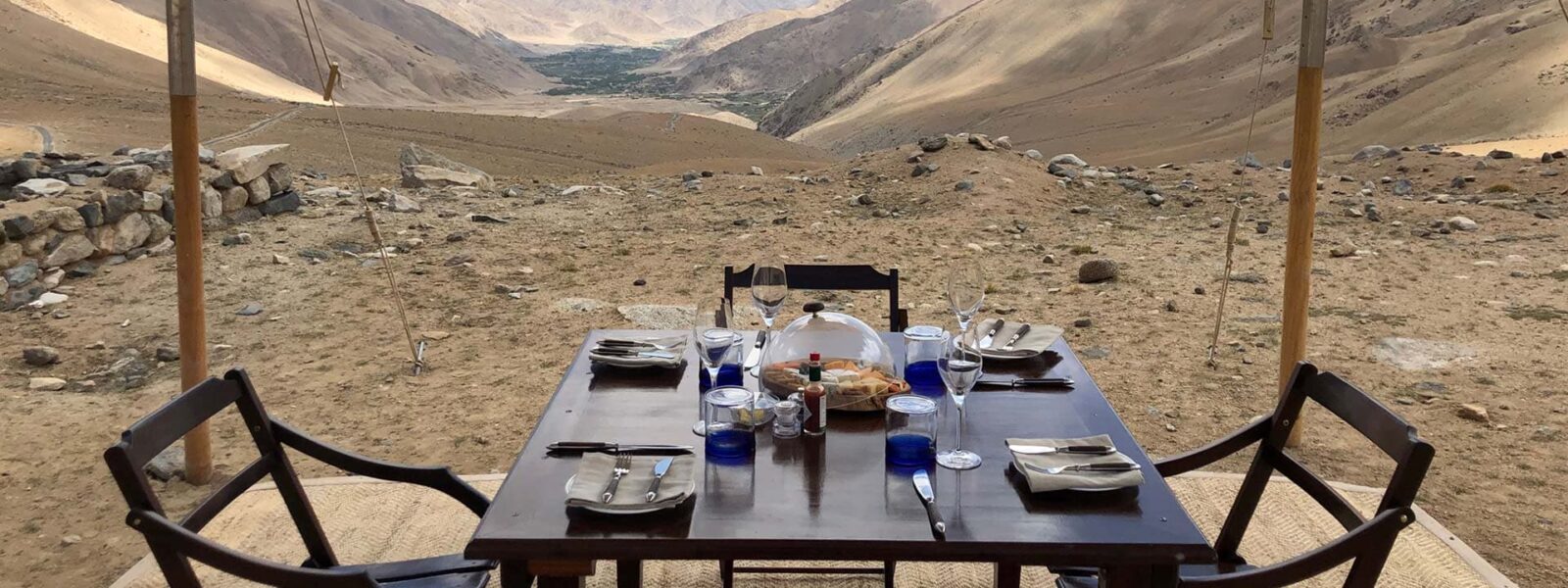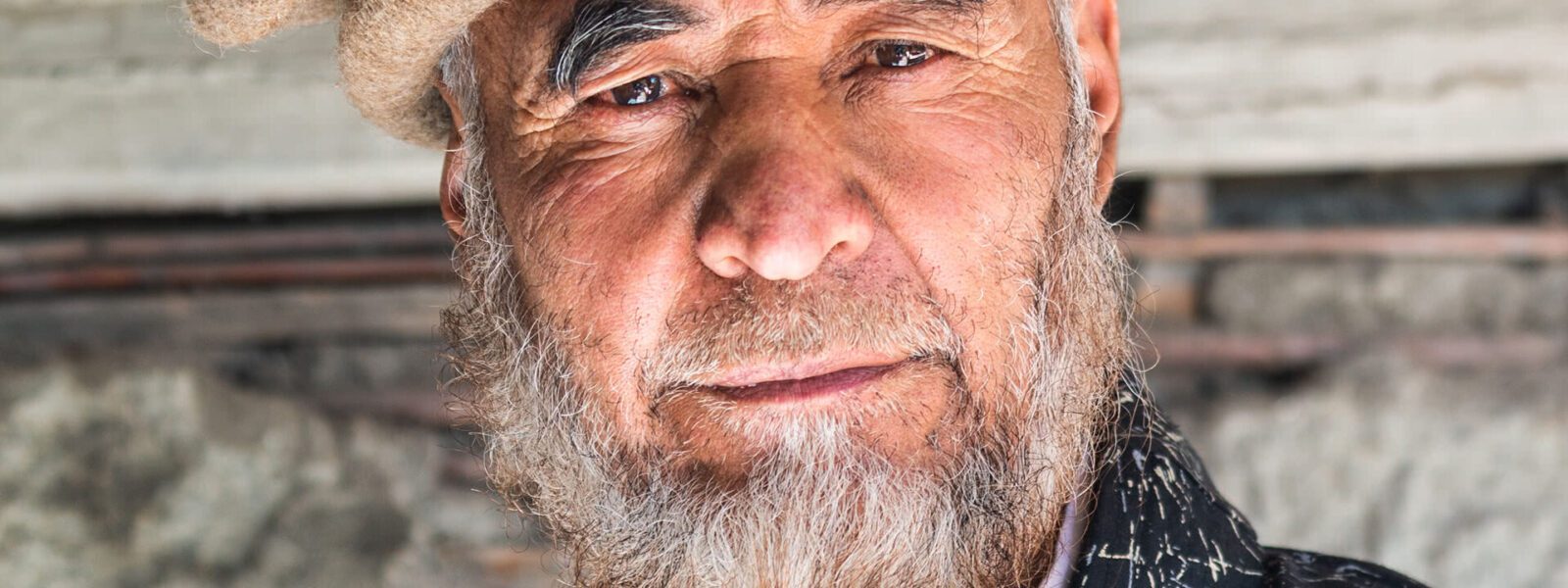Hidden deep within the folds of the Himalayas, Ladakh’s remote villages are more than just dots on a map — they are living legacies. While most travelers to this majestic region set their sights on Leh, Pangong, or Nubra’s sand dunes, few venture into the soul-stirring corners where real Ladakh begins. These secluded hamlets, often accessible only by winding mountain roads or dusty trails, offer something far more precious than picture-perfect views: a chance to slow down, reconnect, and immerse oneself in a rhythm of life untouched by time.
Remote villages in Ladakh are not simply geographic locations — they are cultural repositories, where stories are passed down in the smoke-filled warmth of kitchens, prayer flags flutter in the cold wind, and the silence of the mountains is occasionally broken by laughter or the rustle of barley fields.
In this guide, we’ll uncover ten such villages that promise not only solitude and serenity but a window into Ladakh’s authentic identity. These are places where indigenous traditions are still practiced, where monks chant in ancient gompas, and where you’ll find yourself welcomed with salted butter tea and stories that stretch back centuries.
What makes these off-the-beaten-path Ladakh destinations worth the journey is not just their remoteness, but the profound stillness and richness they offer. Whether you’re hiking to a hidden village like Lingshed, nestled in the heart of the Zanskar range, or driving to the edge of the Aryan valley in Garkone, every destination in this list is chosen not just for its location but for its ability to make you feel — feel history, humanity, and the Himalayas.
This blog post is your compass to the top 10 remote villages in Ladakh. We’ve curated each destination to balance cultural insight, accessibility, and natural beauty, while also keeping in mind those who seek sustainability, authenticity, and experiences far from the crowds. Along the way, you’ll discover how to get there, when to go, where to stay, and why these remote places matter more than ever in a fast-changing world.
So take a deep breath, open your map, and let’s start charting your journey through Ladakh’s quietest corners. These are not just places to visit — they are places to belong, even if just for a few days.

Why Visit Remote Villages in Ladakh?
In a world where everything moves fast, there’s something profoundly healing about standing still. That’s exactly what Ladakh’s remote villages offer — a full stop in the middle of life’s endless paragraph. Away from the bustle of Leh and the selfie lines at Pangong Lake, the lesser-known hamlets of Ladakh invite you into a slower, more grounded way of being.
Why should you visit remote villages in Ladakh? The answer is simple — to experience life as it was meant to be lived. These are not just places to pass through; they are living communities that preserve the values of hospitality, harmony with nature, and deep-rooted cultural identity. Each remote settlement is a tapestry woven from ancient rituals, Buddhist chants, barley harvests, and the hum of yak bells echoing through narrow stone paths.
Whether you’re sipping salted butter tea in a sun-warmed kitchen in Turtuk, learning traditional weaving in the Brokpa village of Dah, or waking to the sound of monastery bells in Lingshed, every moment in these villages brings you closer to something pure. Here, tourism is not commercial. It’s communal. It’s personal. And above all, it’s meaningful.
These secluded villages in Ladakh also serve as sanctuaries for those craving deeper travel. You’re not just visiting a place, you’re participating in it — joining a seasonal festival, helping with farm work, or sitting in meditation with elders. This level of immersion simply isn’t possible in crowded tourist hotspots. These villages offer authentic Ladakhi culture that hasn’t been polished for visitors. What you see is real, raw, and honest.
From an ecological perspective, choosing to explore these remote corners helps promote sustainable tourism in Ladakh. It supports small homestays, keeps traditional crafts alive, and allows fragile mountain ecosystems to thrive without the pressure of mass tourism. By walking rather than driving, eating locally instead of packaged snacks, and listening instead of broadcasting, you become a responsible traveler — not just a tourist.
For adventurers, too, these villages unlock a treasure trove of high-altitude trails, secret passes, and dramatic landscapes that remain off the radar. Treks to these places, like the trails to Sumda Chenmo or Youlang, aren’t just physical journeys — they are spiritual pilgrimages for those who understand that the road less traveled isn’t always paved, but it always leads somewhere unforgettable.
If you’ve ever felt the need to step away from screens, schedules, and noise, the answer may lie in these high places. Here in Ladakh’s hidden villages, life unfolds with the sky, the seasons, and the strength of tradition. Come not to escape the world — but to find your place in it.
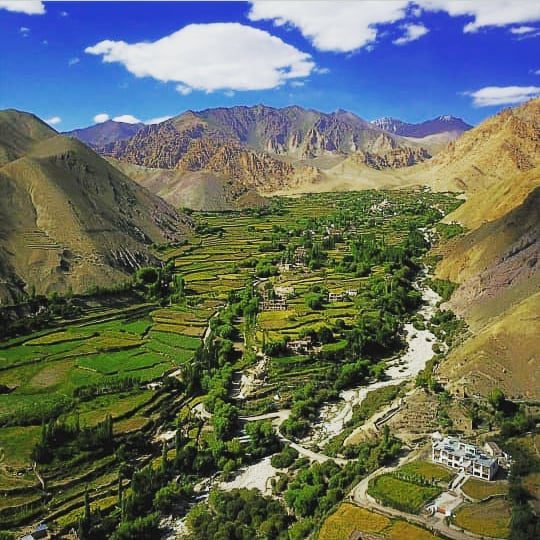
How to Reach Remote Villages in Ladakh
One of the greatest pleasures in Ladakh is the journey itself — the winding roads that snake through barren cliffs, the glacial rivers that follow your path like companions, and the way the landscape opens its heart a little more with every bend. Reaching Ladakh’s remote villages is not always easy, but that’s exactly what makes it so rewarding. Every step into the unknown brings you closer to something unforgettable.
Remote villages in Ladakh are spread across high-altitude valleys, perched on rugged ridges, or tucked along ancient trade routes. Some can be reached by road, while others require treks or even multi-day hikes across mountain passes. Depending on the destination, your route may begin from Leh, Kargil, or occasionally from remote junctions like Padum or Diskit. These journeys demand time, patience, and an adventurous spirit — but the rewards are immense.
If you’re heading to Turtuk or Shyok in the Nubra Valley, you can take the famed Khardung La route by shared jeep or private car. These roads are paved but occasionally unpredictable due to snowfall or landslides. Villages like Dah, Hanu, and Garkone — part of the fascinating Aryan Valley — lie west of Leh and are accessible by road via Batalik. These drives are among the most scenic in Ladakh, offering dramatic views of the Indus River, apricot orchards, and traditional mud-brick homes clinging to the slopes.
For more isolated settlements like Lingshed or Sumda Chenmo, your journey must include trekking. Some of these villages are not connected to the road network at all and remain snowbound during winter. Trekking routes often begin from places like Lamayuru, Chilling, or Wanla and can take anywhere from two to five days depending on the terrain. These paths are not just about physical challenge — they are ancient pilgrim routes, lined with chortens and mani walls, where every footstep echoes with history.
To access far-flung villages in Zanskar such as Photoksar or Youlang, travelers usually drive from Kargil via the Kargil–Padum road, which is open only during summer. In some cases, local buses run a few times a week, but hiring a local taxi or joining a tour is often more reliable and comfortable. Some villages might even require crossing footbridges over glacial streams or navigating narrow mountain ledges — but that’s the price of reaching the soul of Ladakh.
Regardless of how remote the destination is, one thing is certain: these journeys transform you. They are not about speed or convenience — they are about connection, patience, and discovery. In a world of instant everything, the act of reaching a village over days of effort becomes a memory you’ll never forget. And once you arrive, the welcome is warm, the tea is hot, and the mountains, silent as they are, speak volumes.
1. Dah & Hanu – The Aryan Valleys
Hidden along the lower Indus Valley, the twin villages of Dah and Hanu are unlike anywhere else in Ladakh. These settlements belong to the Brokpa, a community often referred to as the Aryans of Ladakh. With their distinct Indo-European features, elaborate floral headgear, and unique traditions, the Brokpa people stand apart in language, culture, and appearance from the rest of the Ladakhi population.
Located around 160 kilometers from Leh, these remote villages in Ladakh are accessible by road via the Batalik sector. The journey itself is unforgettable — winding along the Indus River, passing through rugged cliffs, blooming apricot orchards, and ancient military outposts. Unlike the high-altitude lunar landscapes of central Ladakh, Dah and Hanu are lush, fertile, and surprisingly green, thanks to the warmer microclimate in this part of the valley.
What makes Dah and Hanu truly special is the preservation of their ancestral culture. The Brokpa people practice a form of animism intertwined with Tibetan Buddhism and ancient Bon traditions. You won’t find massive monasteries here, but instead, you’ll witness living cultural heritage — flower-adorned women tending to barley fields, stone houses built in harmony with nature, and colorful festivals that mark the rhythm of the seasons.
For travelers seeking authentic Ladakhi village life, a stay in a Brokpa homestay is unforgettable. You’ll eat with the family, sleep in traditional mud rooms, and learn about customs passed down through centuries. Photography lovers will find endless inspiration in the traditional attire, the vibrant gardens, and the soft evening light that bathes the valley in gold.
While these villages are still relatively unknown to mainstream tourism, sustainable travel projects are slowly developing here. Visitors are encouraged to engage respectfully with the community, support local guides and artisans, and avoid intrusive behavior or uninvited photography. In return, you’ll be rewarded with hospitality that is both warm and sincere — a quiet pride that comes from centuries of resilience in a remote Himalayan enclave.
Dah and Hanu are not just scenic destinations; they are cultural time capsules. To walk through these villages is to step into an ancient world still breathing, singing, and celebrating the beauty of life. It is a chance to look beyond the mountains — and into the soul of Ladakh.

2. Garkone – The Apricot Paradise
Just a short drive downstream from Dah and Hanu, nestled along the banks of the Indus River, lies the enchanting village of Garkone. Often referred to as the “Apricot Paradise of Ladakh,” this peaceful settlement is wrapped in orchards, steeped in ancient history, and guarded by towering cliffs. Garkone may be small in size, but it bursts with color, life, and cultural depth that few places in Ladakh can rival.
Set against a rugged backdrop of the Batalik region near the Line of Control, Garkone is home to the Brokpa people — a community known for their vibrant traditions, unique heritage, and deep connection with the land. While Dah and Hanu are better known, Garkone remains a hidden gem, still off most travelers’ radar. This is what makes a visit here feel so special — it’s raw, real, and untouched by mainstream tourism.
Come spring, the narrow lanes of the village explode into bloom as apricot trees come alive with baby-pink blossoms. The scent of apricot flowers floats through the air, and the valley turns into a postcard of Himalayan springtime. By late summer, the fruit ripens, and villagers harvest apricots to eat fresh, dry for winter, or turn into jams, oils, and traditional sweets. This seasonal rhythm forms the heartbeat of local life — a slow, deliberate dance with nature.
Garkone offers a true off-the-beaten-path Ladakh experience. Accommodations here are modest but welcoming, with simple homestays that allow you to live among the locals, share meals in clay kitchens, and learn about traditional farming, weaving, and herbal medicine. You’ll find that time moves differently here. Days are measured not by clocks, but by sunlight on stone walls, laughter shared over tea, and the quiet hum of village chores.
The village also has strategic significance due to its proximity to the Indo-Pak border. Yet, life here is surprisingly peaceful and rooted. Despite geopolitical tensions, the community radiates warmth, resilience, and pride in their heritage. And while you’ll likely need an Inner Line Permit to visit Garkone, the paperwork is a small price to pay for access to a world that feels suspended in time.
For those looking to deepen their understanding of Ladakh’s cultural tapestry, Garkone is not to be missed. It’s a place where the landscape nourishes both body and soul, where every apricot tree tells a story, and where visitors leave not just with memories — but with a sense of belonging to something timeless.

3. Turtuk – Ladakh’s Last Village Before Pakistan
Perched on the edge of the Shyok River, where the rugged Nubra Valley begins to dissolve into Baltistan, lies one of the most fascinating villages in all of Ladakh — Turtuk. Known as the last village before the Pakistan border, Turtuk is far more than a geographical curiosity. It is a cultural jewel, a living museum of Balti heritage, and a serene world of walnut groves, stone houses, and winding alleys lost in time.
Turtuk was part of Pakistan until 1971, when it was integrated into India after the Indo-Pak war. This unique history gives the village a flavor entirely different from the rest of Ladakh. Here, you’ll hear the melodic rhythm of the Balti language, taste apricot-based sweets passed down through generations, and walk among architectural styles that blend Central Asian and Himalayan influences. For travelers interested in cultural immersion in Ladakh, this is as real as it gets.
Reaching Turtuk is a journey in itself. From Leh, the route takes you across the world-famous Khardung La Pass and deep into the Nubra Valley, passing through Diskit and Hunder before finally arriving at this hidden oasis. The landscape changes dramatically — the cold desert gives way to terraced fields, green pastures, and blooming apricot trees. It feels less like you’re ascending into the mountains, and more like you’re being gently folded into a forgotten valley.
What makes Turtuk truly unforgettable is its people. The villagers are warm, deeply proud of their heritage, and open-hearted in their hospitality. Many welcome guests into their traditional homes, offering homemade Balti bread, yak milk tea, and stories of the past. You can visit an old royal palace, now maintained by descendants of the Yabgo dynasty, or explore a local museum that curates everyday objects turned relics by the passage of time.
Homestays in Turtuk are some of the most immersive in Ladakh. Travelers can help in the kitchen, join in seasonal farming activities, or simply sit on a shaded patio listening to the river and mountain winds. It’s a place where silence is sacred, and every detail — from handwoven carpets to the call to prayer — invites reflection.
Despite its proximity to the border, Turtuk is peaceful, poetic, and perfect for travelers seeking a deeper connection with Ladakh’s layered identities. It is not just one of the most remote villages in Ladakh; it is a bridge between histories, between worlds — and perhaps, between who you are and who you become in the quiet company of mountains.
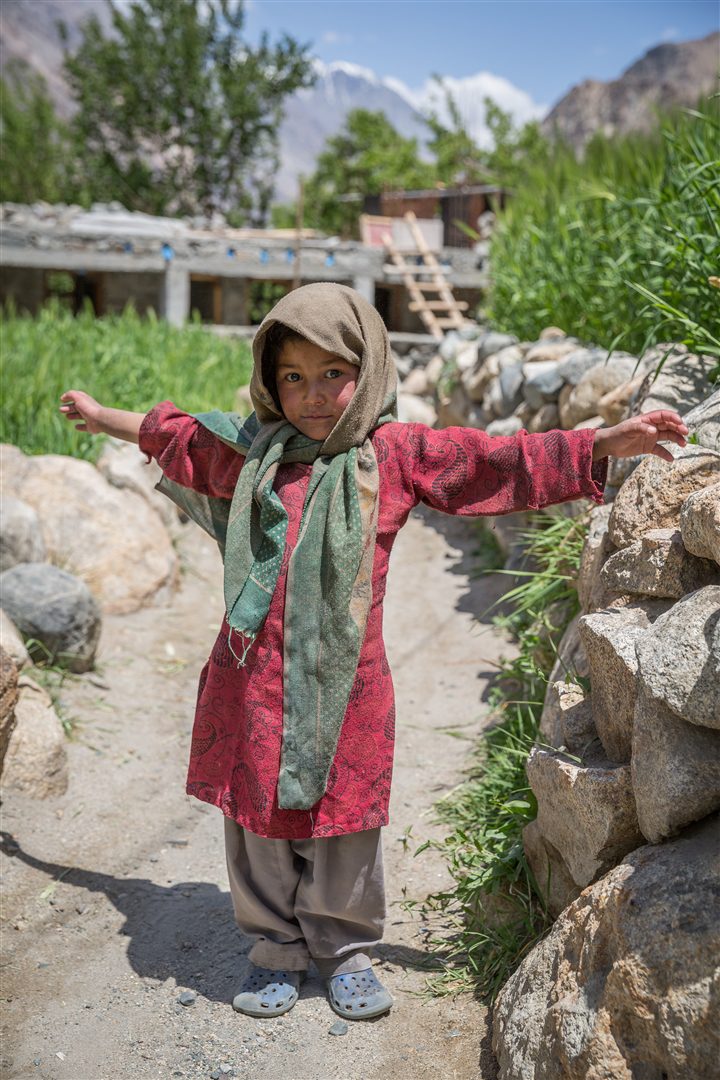
4. Skurbuchan – The Agrarian Gem
Skurbuchan is the kind of place that doesn’t shout for attention — it simply waits for you to arrive, and when you do, it unfolds like a Ladakhi folktale written in stone, sky, and soil. Located in the Sham region of western Ladakh, about 125 kilometers from Leh, this peaceful village is surrounded by golden barley fields, ancient chortens, and the whisper of centuries carried in the wind. Here, Ladakh’s agricultural traditions are not preserved in museums — they’re lived every single day.
Set at a lower altitude compared to other parts of Ladakh, Skurbuchan enjoys a longer growing season. This gives the village its distinct identity as an agrarian hub in Ladakh’s high-altitude desert. As you approach, the landscape softens: steep crags give way to terraces, orchards, and carefully tended fields where families work together to harvest the land just as their ancestors did. The pace is slow, the smiles are quick, and the connection between people and the earth is palpable.
Skurbuchan is also known for its deeply rooted cultural life. The village is dotted with prayer wheels, mani walls, and whitewashed stupas. Villagers wear traditional Gonchas, and elderly women still spin wool in the sun. Religion and ritual are woven into daily life, and festivals are celebrated with songs, dance, and prayer that echo through the mountains. Visitors often find themselves unexpectedly invited into homes or onto rooftops for a better view of a village ritual or local celebration.
For those seeking a truly authentic village experience in Ladakh, Skurbuchan is ideal. It’s not a place for quick sightseeing, but for slow, respectful discovery. Homestays here are modest and family-run, where guests share not only meals but stories, laughter, and the occasional chore. The village is also a convenient base for exploring nearby offbeat locations like Domkhar and Achinathang, known for rock art and apricot orchards.
While Skurbuchan may not have dramatic glaciers or towering peaks, it offers something far more rare — stillness, continuity, and a grounded way of life. In a world that’s constantly chasing the extraordinary, this humble village reminds you that there’s profound beauty in the ordinary. It’s a place to breathe, to connect, and to watch the barley sway under a Himalayan sun that feels older than time.
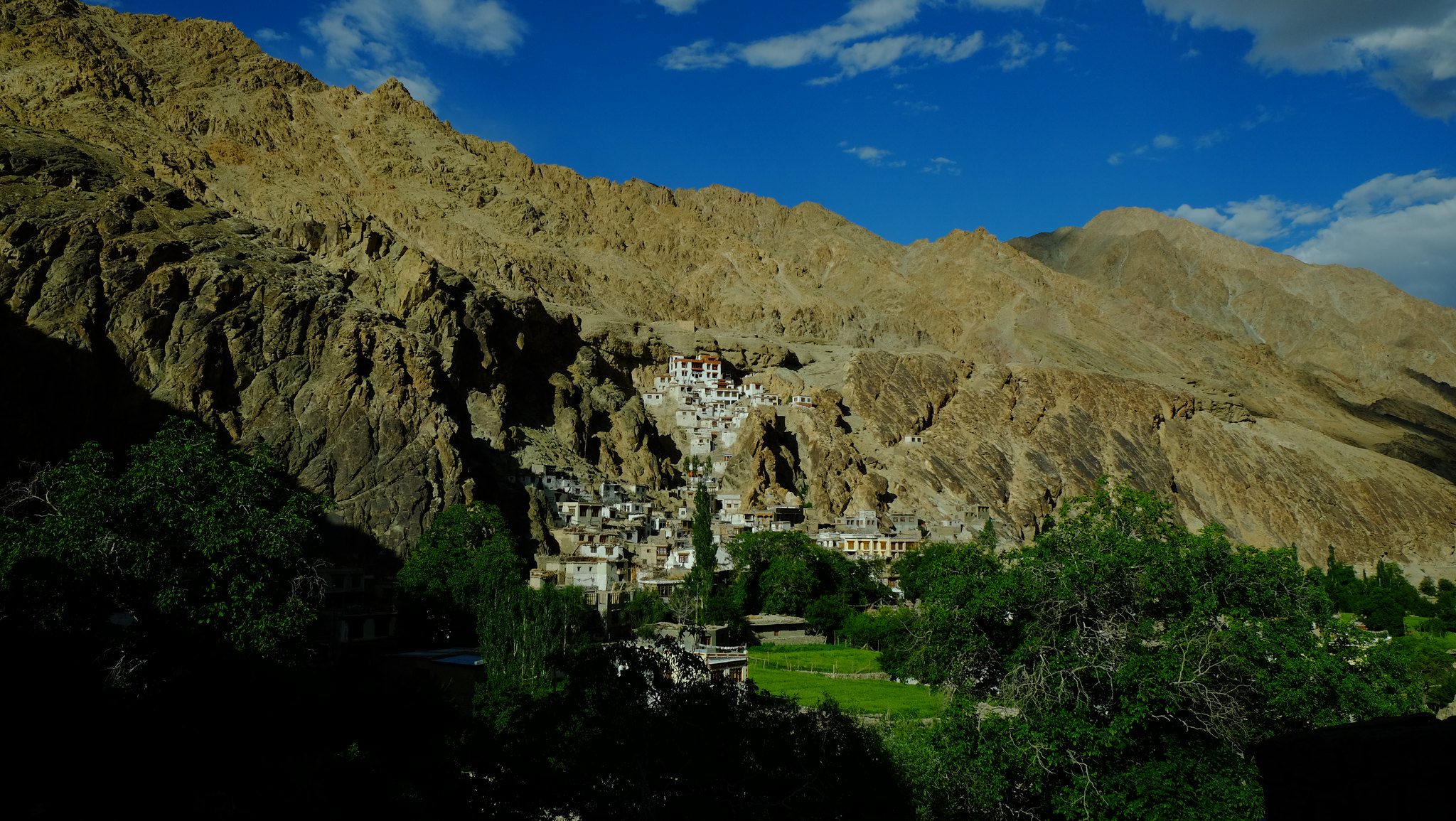
5. Lingshed – A Hidden Monastic Hamlet
There are places in Ladakh where the journey itself is the destination — and Lingshed is the perfect example. Tucked deep within the folds of the Zanskar mountains, this isolated village is one of the last remaining settlements in Ladakh that cannot be reached by motorable road year-round. For centuries, it has remained cut off by snow, stone, and silence, preserving a lifestyle that feels untouched by the passage of time.
To reach Lingshed, one must trek. The most popular route starts from Lamayuru or Wanla, crossing high passes such as Singge La. The journey can take 3 to 5 days, depending on the route and weather. Every step of the way offers staggering views of jagged peaks, wind-sculpted canyons, and surreal Himalayan silence. This is more than a hike — it’s a pilgrimage into the spiritual heart of Ladakh.
Once you arrive, the village reveals itself slowly. Stone homes cling to the slope like they’ve grown from the mountainside itself. Terraced fields flutter with prayer flags, and the massive Lingshed Monastery — founded in the 1440s — rises like a sentinel above it all. Inside the monastery, time seems to slow. Monks chant in rhythm with spinning prayer wheels, and the scent of juniper smoke drifts through ancient halls lit by butter lamps.
Visitors to Lingshed often come for the spiritual experience. The Lingshed Monastery is a sacred site, home to hundreds of monks, some of whom are just boys learning ancient philosophies and rituals. During the annual festivals, masked dances and rituals bring the community together in a celebration of faith, color, and continuity. To witness these traditions in such a remote setting is to see the Himalayas not just as a place of nature — but as a cradle of culture and spirit.
Homestays in Lingshed are basic but filled with warmth. Families welcome travelers like long-lost relatives, offering tea, tsampa, and stories shared by the hearth. There’s no mobile network, no electricity for most of the day, and no distractions — just quiet, connection, and the rhythm of life at 3,900 meters.
For trekkers, seekers, and lovers of solitude, Lingshed is a revelation. It is one of the few places left in the world where the modern noise falls away completely. All that remains is the wind, the mountains, and the echo of a prayer that has been carried through the valleys for generations.
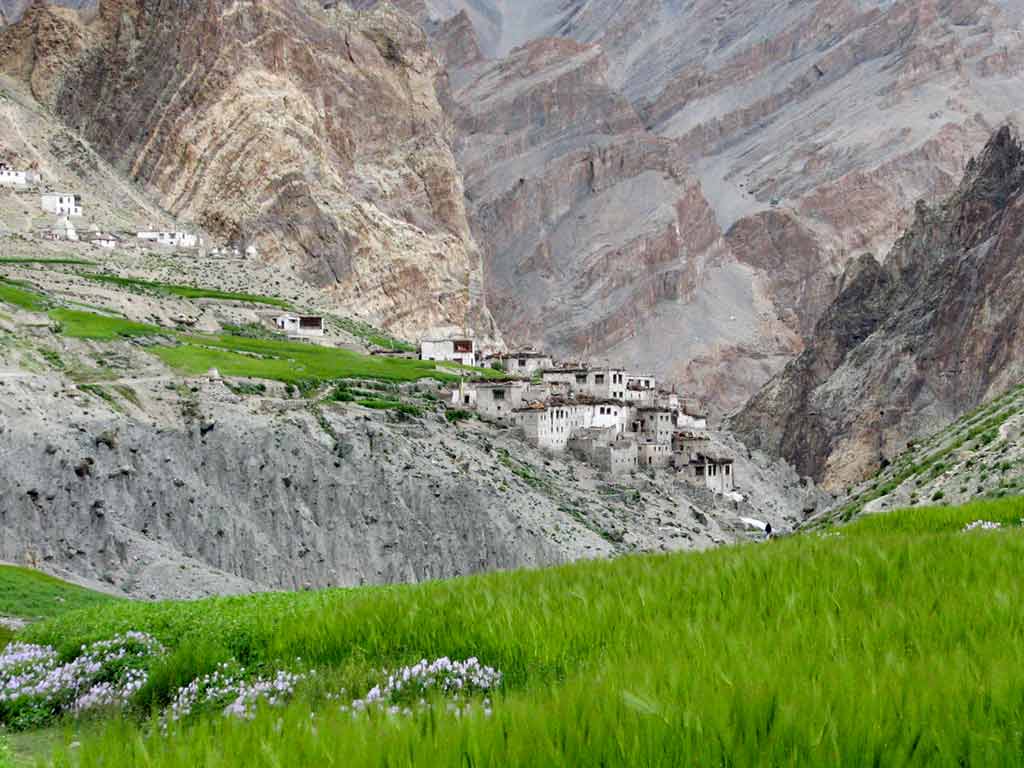
6. Photoksar – Between Two Worlds
High in the mountains of western Ladakh, nestled between the lofty passes of the Zanskar range, lies a village that feels like it belongs in two worlds at once — the ancient and the celestial. Photoksar, perched at over 4,000 meters above sea level, is one of Ladakh’s most photogenic and remote settlements. Surrounded by stark cliffs, glacial streams, and terraced fields that shimmer golden under the high-altitude sun, it is both breathtaking and humbling.
Photoksar lies on the route of the famed Lamayuru to Darcha trek, and is typically reached after crossing the Sirsir La pass. Though it is accessible by road during the short summer season, the journey is not for the faint-hearted — narrow dirt tracks carved into rock faces, river crossings, and dramatic altitude shifts make it a true adventure. But for those who persist, the reward is a village that looks as though it was painted onto the earth with a monk’s brush.
The beauty of Photoksar is not just in its landscape, but in its remarkable sense of isolation. With no phone signal and only intermittent electricity, the modern world feels like a distant echo. Life here is dictated by the seasons: barley is planted and harvested in a flurry of community activity, livestock are taken to higher pastures, and homes are fortified for the brutal winter. Yet in this harsh environment, there is also poetry — the calm smile of an old woman spinning wool, the laughter of children playing by the stream, the distant rumble of a yak caravan returning home.
For cultural explorers, Photoksar offers deep insight into traditional Ladakhi life untouched by tourism. The village’s architecture is classic — thick-walled whitewashed houses with flat roofs, wooden windows, and prayer flags that whip in the wind. The people are welcoming and grounded, eager to share their way of life with the few who make it this far. Small homestays provide simple but heartfelt hospitality, and evenings often end with tales told by candlelight over a warm bowl of thukpa.
Photoksar stands between two worlds — the past and the present, the known and the unknown, the sacred and the ordinary. It is not a place to check off a list. It is a place to feel the weight of silence, the vastness of the sky, and the resilience of those who live where few dare to go. Visiting Photoksar is not just a journey through space, but through time itself.
7. Youlang – Borderland Solitude
Far removed from tourist trails and nestled deep in the highlands of Ladakh’s border zone lies the solitary village of Youlang. Located in the lesser-known regions of Zanskar, not far from the frontier with Himachal Pradesh, Youlang is a place of wind, stone, silence — and staggering natural beauty. It exists not only on the edge of geography, but on the edge of imagination.
Youlang is not easy to reach. There are no luxury roads, no clear signboards, and no phone signal waiting to greet you. Travelers coming from Padum must brace themselves for long, bumpy drives on unpaved tracks and river crossings. In some seasons, the only way to access the village is by foot, trekking through vast alpine meadows and negotiating rugged terrain. But this isolation is precisely what preserves the essence of the place.
The village is small — no more than a cluster of traditional homes built with stone and mud, surrounded by barley fields and grazing grounds. Life here is elemental. The air is clean but thin, the nights star-filled but freezing, and the people few but deeply rooted. There is a sense of permanence to Youlang — not because it’s grand, but because it endures.
Youlang is one of the last remaining strongholds of authentic Himalayan village life. With almost no exposure to tourism, its customs and traditions remain undisturbed. The villagers still live by ancient rhythms: tending to livestock, storing dried foods for winter, and gathering for communal prayers during the changing of the seasons. For visitors who seek cultural honesty over curated experiences, Youlang offers a rare and respectful glimpse into the past.
Homestays here are rare and extremely simple — sometimes little more than a shared room and home-cooked food made from what’s available. But what these stays lack in comfort, they more than make up for in sincerity. It’s not unusual to find yourself invited to sit around the hearth, share tsampa with the family, and listen to folk songs that have never been recorded, only remembered.
Youlang is solitude defined. There is no Wi-Fi, no distractions, and nothing to do in the conventional sense. But for those who appreciate the power of stillness and the quiet dignity of lives lived close to the land, it is a kind of sanctuary. It asks nothing of you except your presence — and in return, it offers peace, perspective, and a connection to something far older than ourselves.

8. Sumda Chenmo – Home of Hidden Monasteries
Some villages are known for their landscapes, others for their people — but Sumda Chenmo is known for what it keeps hidden: ancient secrets carved into stone, whispered through paintings, and protected by the mountains for over a thousand years. Nestled deep in the Markha Valley region, far from the main roads and even farther from the tourist gaze, this village is home to one of Ladakh’s least visited yet most historically significant monasteries.
Reaching Sumda Chenmo is no simple affair. The trek begins from Alchi or Chilling, and requires at least one full day of hiking over rocky paths and riverbeds. Along the way, you’ll pass no tea stalls or guesthouses — only vast silence, dramatic ridges, and the occasional flock of blue sheep. But for the spiritually curious and the culturally devoted, this route is a sacred passage to something extraordinary.
The main draw is the Sumda Chenmo Monastery, believed to be one of the last surviving temples built under the famed Lotsawa Rinchen Zangpo, the “Great Translator” who helped spread Buddhism across the Himalayas in the 11th century. Hidden within the monastery are intricate wall murals, wooden sculptures, and manuscripts that have remained untouched for centuries. Unlike Alchi or Lamayuru, this sacred site has never been commercialized. Here, the art speaks softly — but with a clarity that resonates across time.
The village itself is small, peaceful, and deeply spiritual. Only a handful of families live here, maintaining their herds, cultivating small fields, and keeping alive the oral histories of their ancestors. Life is modest, yet filled with meaning. There are no hotels or guesthouses — only homestays offered by locals who receive guests with quiet hospitality, serving butter tea, roasted barley, and warm stories by oil lamp light.
What makes Sumda Chenmo so remarkable is not just its seclusion, but its ability to stir the soul. This is not a destination for Instagram check-ins or itinerary hopping. It is a place for contemplation, for slow walks under prayer-flag skies, for feeling the deep pulse of Ladakh’s spiritual heritage in the soles of your feet.
For seekers, scholars, and silent wanderers, Sumda Chenmo is a revelation. It proves that even in the most remote corners of the Himalayas, art, history, and devotion are alive — patiently waiting for those willing to walk the long path to reach them.
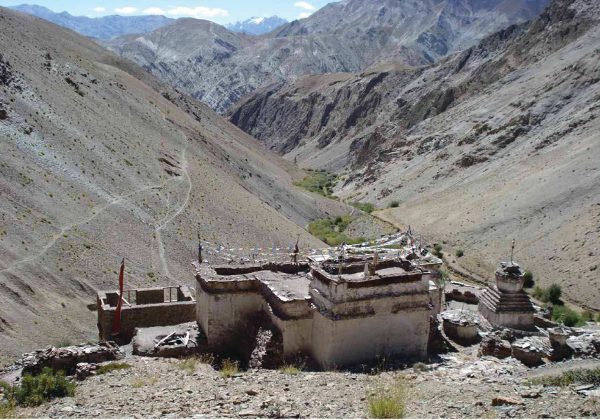
9. Shyok – Gateway to Extreme Remoteness
There is remote, and then there is Shyok. Tucked deep within the Nubra region, along the fierce and winding path of the Shyok River, this village feels like the end of the road — not just geographically, but emotionally. Shyok is the kind of place that strips away the excess, leaving behind only what matters: wind, sky, stone, and the stories people tell to survive between them.
Located roughly 150 kilometers from Leh, Shyok sits on the route between Nubra Valley and Pangong Lake. Most travelers speed past it on their way to more popular destinations — but the few who choose to stop are rewarded with a sense of vastness and silence that cannot be found elsewhere. Here, the cold desert meets the high Himalayas in an austere and unforgettable landscape.
The village itself is modest, scattered across the wide, open plains beside the river. Life moves slowly. Children herd goats on dusty trails, prayer flags flutter above adobe homes, and old men sit beneath apricot trees, their silence a language of its own. This is a place for reflection, not recreation. For travelers seeking solitude in Ladakh, there may be no better setting.
Shyok is not without its challenges. The climate is harsh, the infrastructure limited, and amenities few. But therein lies its power. This is a village that asks nothing from you, and in return, gives you something deeper than comfort: perspective. The mountains don’t just surround you — they swallow you whole. And yet, you’ll feel strangely at peace in their presence.
There are a handful of homestays in Shyok, mostly run by families who live off the land and open their doors with quiet generosity. Meals are homegrown, beds are simple, and nights are defined by starlight. There is no mobile signal, no Wi-Fi, and often no electricity — just the glow of oil lamps and the warmth of human connection.
Shyok is also an excellent base for offbeat explorations in eastern Ladakh. From here, you can trace lesser-known routes towards Durbuk or Tangtse, explore secret valleys, or simply spend your time walking along the river, where time seems to bend and stretch with the flow of water and wind.
To visit Shyok is to leave behind the world you know — and in doing so, to discover the world within. It is one of the most isolated, sincere, and stirring villages in all of Ladakh. And for those who make the journey, it is a destination that stays with you, long after the road disappears behind you.
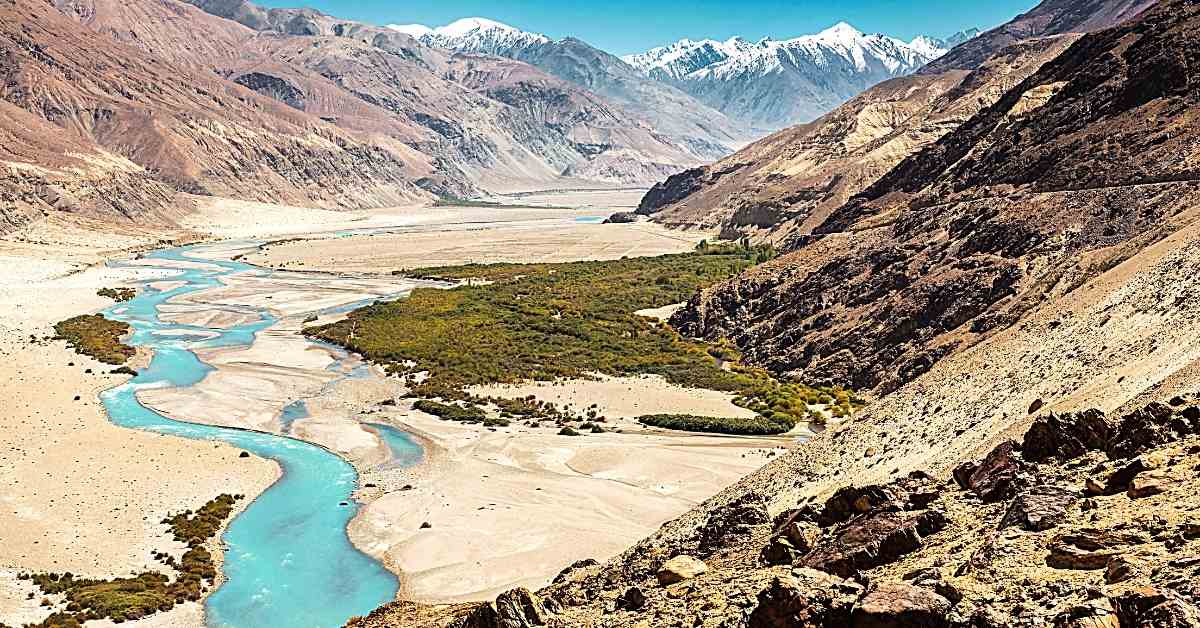
10. Kukarchey – Spiritual Serenity at the Edge
At the very edge of Ladakh’s known cultural and spiritual geography, along the silent bends of the Kanji River and just a breath away from the Aryan villages of Sanjak, lies the rarely mentioned yet quietly remarkable village of Kukarchey. For most, it doesn’t appear on maps. For others, it exists only in passing — a name whispered by locals when speaking of places that still feel sacred and untouched. But for the few who reach it, Kukarchey offers a unique glimpse into the resilience of belief, heritage, and peace at the margin of the mountains.
Kukarchey is notable for being a solitary pocket of Buddhist tradition in a region otherwise culturally defined by muslim people and their distinct animist-Buddhist blend. While it shares the same dramatic landscape and fertile microclimate of its muslim neighbors, Kukarchey holds a quiet spiritual identity all its own — expressed through its ancient gonpa (monastery), oral histories, and the enduring rhythm of rural life lived with intention.
The village is home to a single Buddhist family, whose house — known locally as the Abapa House — has stood for over 400 years. This house is more than just a dwelling; it is a sanctuary. Inside, you’ll find rooms lined with sacred texts, thangka paintings dimmed by time, and a compact prayer room filled with the scent of butter lamps and incense. In the mornings, the chants of mantras rise with the sun, carrying across the barley fields and apricot orchards. It’s not just spiritual — it’s living memory.
Reaching Kukarchey requires intention. Located in the Chiktan area of the Kargil sector, access is typically by car from Leh via the Dah road, followed by a short hike up towards the Kanji riverbanks. There are no formal homestays or accommodations, but those seeking deep cultural immersion may request to stay at the Abapa House as guests — not as tourists, but as respectful participants in a heritage preserved in silence and stone.
There are no shops, no distractions, no curated experiences in Kukarchey. And that is precisely its gift. This is a place to reflect, to listen, and to witness. The landscape, both human and natural, invites stillness. Days pass slowly here — marked by chores, prayers, shared meals, and the occasional visit from neighboring villagers. Nights are quiet, the sky endless, the stars uncountable.
For spiritual travelers, cultural historians, and seekers of genuine connection, Kukarchey offers more than just remoteness — it offers meaning. It reminds us that even in the farthest corners of the world, a single voice, a single family, a single house can preserve the sacred against the pull of time. Kukarchey is not just a village — it is a vow kept across generations.
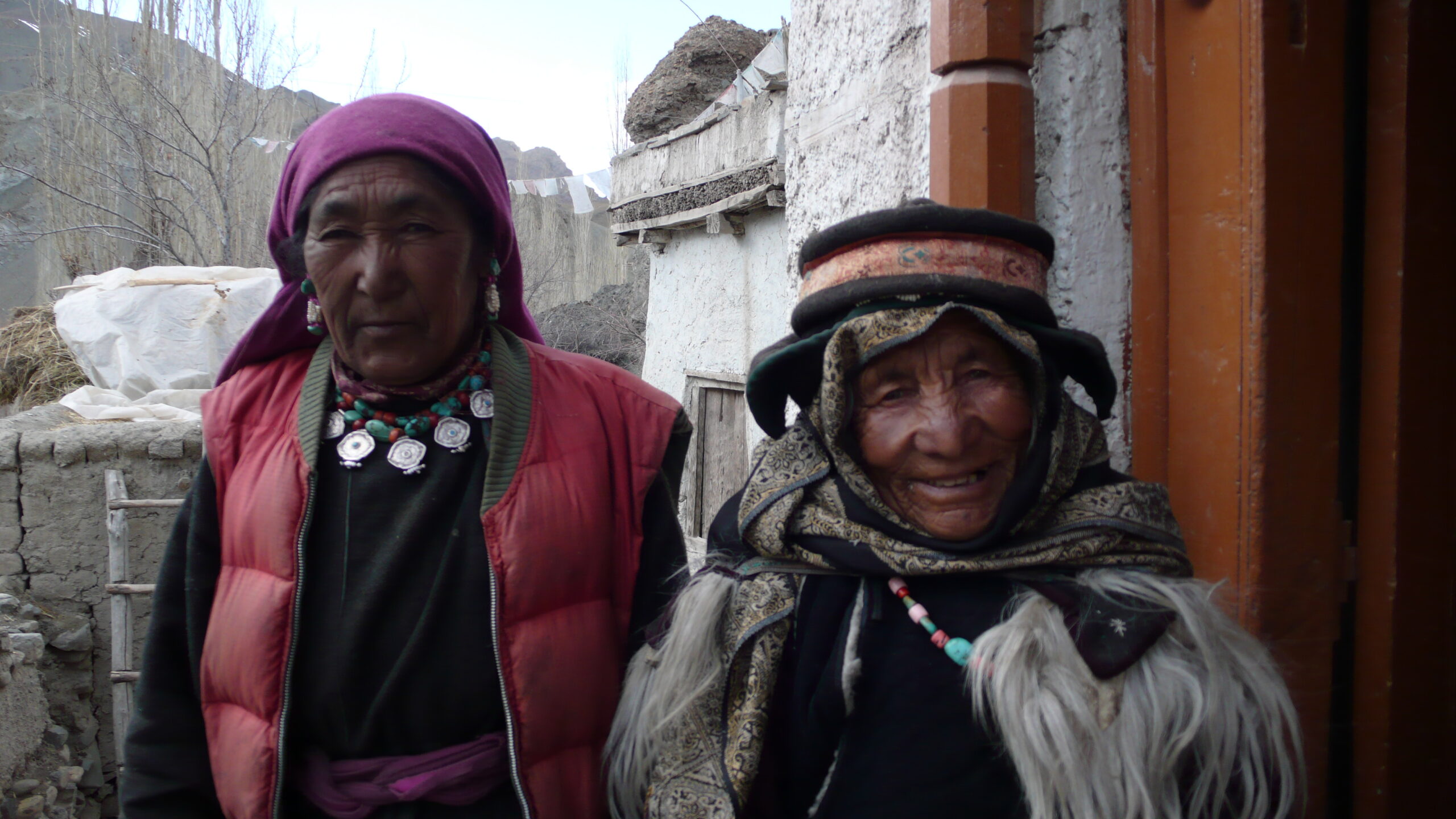
Conclusion – Beyond the Roads, Into the Soul
Ladakh is often praised for its monasteries, mountain passes, and moonlike landscapes — but its heart beats strongest in the forgotten corners, the hidden folds, and the villages that sit quietly at the edge of the world. These ten remote villages in Ladakh are more than scenic stops. They are living communities, spiritual strongholds, and cultural sanctuaries where time slows, and meaning deepens.
Whether you are tracing the footsteps of the Brokpa in Garkone, listening to ancient chants in Lingshed, or sharing barley bread with a family in Shyok, these places transform you. They shift your attention from what’s next to what’s now. From what you want to where you are. And in doing so, they offer a rare kind of travel — not just across distance, but inward, into the soul of a place and perhaps, your own.
But these villages also ask something of you. They ask for patience, respect, and humility. This is not travel built on convenience. These are journeys that involve dusty roads, cold nights, uncertain paths — and in return, they offer honesty, hospitality, and unforgettable human warmth. They are not curated. They are lived.
As Ladakh slowly opens up to more visitors, there’s a responsibility to tread lightly. Support local homestays. Travel with guides from the village. Leave no waste. Learn a few Ladakhi or Balti words. Listen more than you speak. And above all, carry away memories, not footprints.
In these faraway villages, the world becomes quiet enough to hear your own heart. And perhaps, just perhaps, you’ll find that the most remote places have a way of bringing you home — not just geographically, but spiritually.
So if you’re planning a journey to Ladakh, look beyond the usual routes. Let the wind lead you past the popular and into the profound. These villages are waiting — not to impress, but to embrace. And you don’t just visit them. You remember them, long after you’ve returned.

